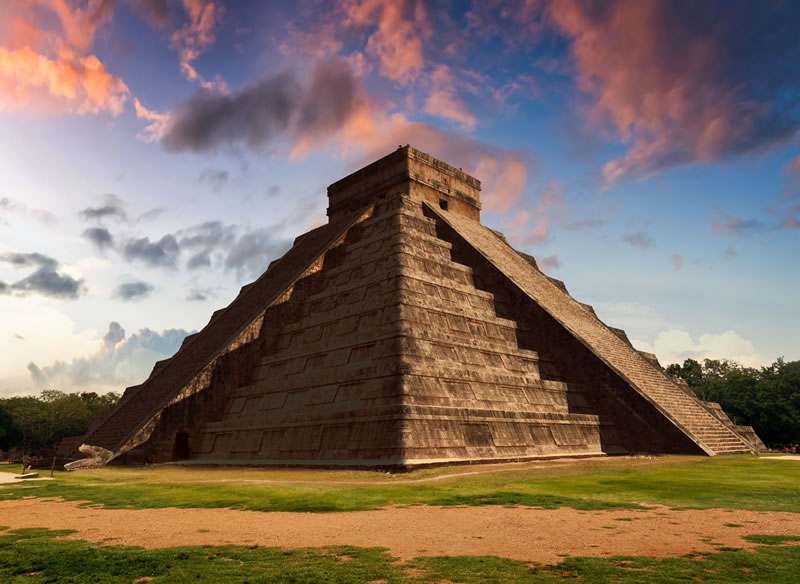
The Maya developed their own calendars, a very elaborate hieroglyphic and petrographic system and used a speech based on numerical accounts expressed in Mesoamerica; must of it, contained an affirmed inspiration of the cosmos and the proper Mayan mythology based on their gods with Astral personalities and their benefits on the lands and people.
One of the most appreciated gods to the Mayas was Kukulcán. Also known in the ancient Maya K’iche’ culture as Gukumatz. The name Kukulcán means “feathered serpent”, like his Toltec and Aztec equal god: Quetzalcoatl.
The cult of Kukulcán/Quetzalcoatl was the first Mesoamerican religion to transcend the old Classic Period linguistic and ethnic divisions, facilitated communication and peaceful trade among peoples of many different social and ethnic backgrounds.
The cult was originally centred on the ancient city of Chichén Itza in the Mexican state of Yucatán, where there is a temple dedicated to this god. It is also known as the Pyramid or Castle –Castillo- of Kukulcán.
At this temple, during the spring (March 21) and fall equinox (September 22) the shadow cast by the angle of the sun and edges of on the right balustrade of the North staircase the nine steps of the pyramid combined with the northern stairway and the stone serpent head carvings create the illusion of a massive serpent descending the pyramid.
It was believed that the light from the heaven came down to the Earth, and the light from the serpent contributed to make the ground fertile and announcing a new life cycle.
Have your say - Leave a comment below: